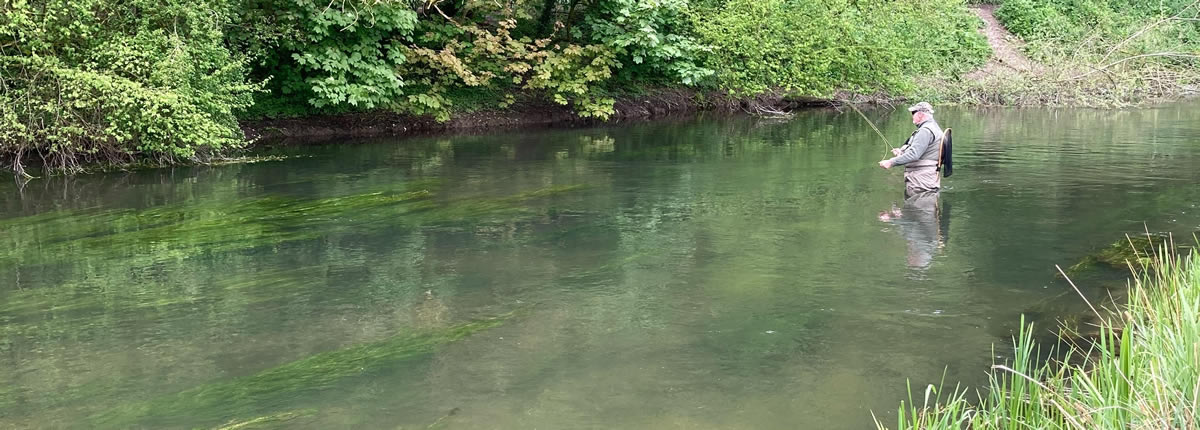This content has been archived. It may no longer be relevant
INDEX
Section Navigation
SADAC. Mid season update. Game Fisheries. 2021.
In contrast to the 2020 season we were able to open on April 1st with only Hurdcott out of action because of flooding. Investigations revealed some “interventions” with concrete blocks in the hatches there which were removed and levels returned to normal.
The early season saw prolonged cold and wet weather but there were plenty of members fishing through some difficult days. Grannom hatches were good particularly on the mixed beats but also now at Amesbury and Durnford as a result of the egg transplant work we have been doing. Good catch returns at many fisheries in the early season, Stonehenge, Homington, Stapleford amongst others being notable. Mayfly has now largely been and gone and as always our beats have been busy. The hatches weren’t as prolific as they can be but generally good sport was had and is continuing with mayfly trickling off now on all the beats.
We are continuing to buy our brown trout for stocking from Manningford Fish Farm . We have purchased 2,000 good quality fish up to 2 lbs for the season. The majority of these will be in the rivers by mid season with some held back for later in the year. Fish are stocked at Durnford, Amesbury , Abbey, Countess/Ratfyn and Stapleford/Druids into areas of poor trout habitat and high fishing pressure. This year we have invested in upgrades to our tanks, aeration and oxygen equipment so the fish are arriving at the river after a shorter journey in better condition. This also applies to the lake stocking where transition from fish farm to lake has proved problematic in the past.
This year’s fish marked with red plastic tags (pages 6 and 7 of year book for detail ) are clearly showing in the returns and in member’s fishing reports. Last year’s batch were marked with yellow tags and we have had a good overwintering with plenty of yellows and a few other earlier colours being caught.
Later in the year we are planning to do some electro fishing survey work to check the numbers of stocked fish remaining in the beats at the end of season.
As usual catch returns and reports show a small number perhaps 20% of our members catching most of the fish. We encourage reporting on the forum so that other members can see that although there are clearly days when fishing is hard generally anglers who have the right skills find the fish.
To that end the club ran some skills sessions on the rivers. “The Academy”, led by committee member Kris Kent was in planning for some time but held up by Covid. These sessions have been very popular and more will be offered.
We also offered two master classes at Hamer Lake with Charles Jardine. Charles is a member of our club and it would be hard to find a better tutor for our rainbow trout fishing.
The club’s focus on habitat, encouraging wild fish populations and wildlife generally balanced against a more traditional stocking policy on some of our beats is proving very popular with a growing waiting list for membership. We continue to keep our beats in the traditional chalk stream style with mown banks and trimmed fringes, weed cutting in the mid season and traditional upstream dry fly and nymph methods permitted. It is a successful formula and it would be tempting because of the popularity to take in more members and enjoy the extra income. We are however acutely aware of the problems that fishing pressure can bring and although we have had game membership rising to over 1600 previously we are now holding the numbers at around 1450 to preserve quality. Our policy is to provide good game fishing at a realistic price and is supported by the mix of local, full members and the wider group of associate members from outside the “14 mile around the spire” boundary who often fish less but still find their membership to be exceptional value. This balance works financially and for the fisheries but it would be unwise to try to squeeze too much out of it.
Members are aware of our purchase of the land and woodland at Amesbury to compliment the fishing rights we already own there and the long term leases we have from local owners. In keeping with our intentions to support the aquatic environment and hence the fish populations we are developing the land we own as a natural buffer to the river and fishery. We have involved wildlife specialists in surveying and recording our holding. Our species recorded lists are growing all the time with some real rarities being found. The more we learn the better chance we have to protect them and by extension the river where a healthy whole ecosystem is the best thing we can strive for to underpin good quality fisheries. We have been accused from time to time of turning into a wildlife trust but unapologetically we say it is a simple fact that what is right for the plants, bugs and everything else is right for the fish and the fishing. It’s also true that most of our members enjoy their immersion in the whole environment and in everything they can see and hear and smell.
The lists of species recorded in our Amesbury reserve is growing all the time but the list at June can be downloaded HERE. Some of these are very special and are going to give us ammunition within our battles for water quality and the long term preservation of our fishery. Please use the back path through the woodland and the picnic glade for your lunch not only to avoid disturbing anglers following you up the beat but to enjoy some of what is there.
Thanks to the team who are involved in this.
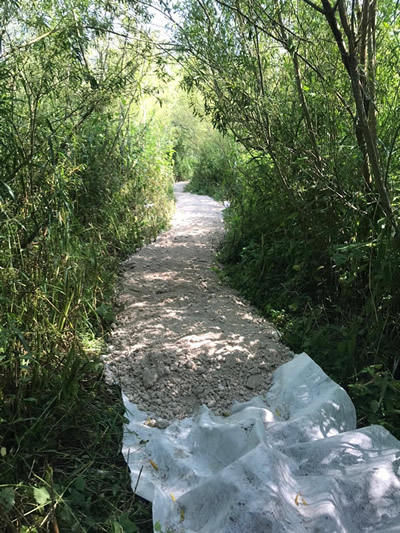
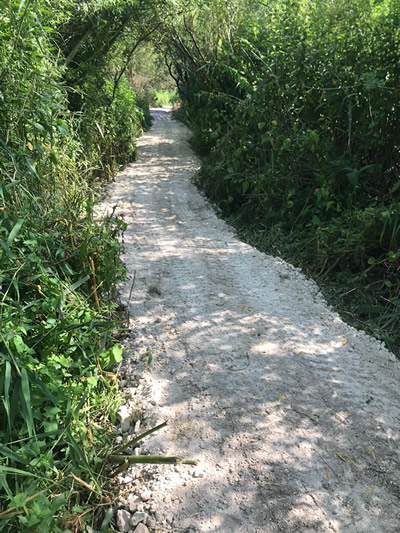
In July we improved the access path through the wood below Sleeper Bridge. This was done in the same way as the paths further up the fishery with machinery working on site.
Having written all that we are also as often accused of despoiling the environment and only doing things that benefit our fishing and fishermen. One of these examples is the weed cut but it might be cormorant control, woody debris in the river, electro fishing, gravel jetting or any of the many activities we are involved in that preserve the chalk steams as they are.
This time we’ll say a bit more about the weed cut. The season has seen a lot of weed cut in the river and a lot of cut weed floating through in the second weed cut window. (See your yearbook page 33 for details of the planned weed cuts ). Last year saw no weed cut as a result of the pandemic and many more people walking the footpaths and taking an interest in the countryside. Not surprisingly this year’s cut has proved a little controversial. We have had “blockages” on bridges and hatches, plastic and woody debris in the mix and a pretty unsightly mess it can all be. When cutting weed we talk frequently to members and the public explaining what it is all about.
The chalk streams of the Avon valleys are not a natural feature, they have been subject to years of interference and reengineering by our forebears to support agriculture, water meadows, milling, land drainage and various other activities. The result is what we have today which now supports a game fishing economy of significant importance to the area and the landowners of the valleys. It provides jobs, leisure, a beautiful environment, income from visiting anglers to pubs, bed and breakfasts, chip shops , tackle shops and so on. If left alone it would gradually progress to the ecological end state of wet willow woodland, something like we see in the woods alongside the lower Sleeper Bridge stretch. There would be fish but there would be no fishing in the gentlemanly style of the present rivers. We have frozen a moment in the ecological progress of the river.
Many of the activities that made the chalk steams what they are have largely disappeared, the mills have gone, we no longer need impounded mill leats to drive water wheels, the water meadows have almost gone, we need far less of the hatches and structures that controlled the drowning of grassland. The fishing remains with more modern use of the pasture alongside the river and with residential and leisure purposes also of great importance. Some of those old practices survive and now support the fishing, the control of levels and flows with hatches, weed cutting and others.
The rivers as they are have been perfect for ranunculus, starwort and other weeds, good flow, cool temperatures, good nutrient levels. They support invertebrate life and trout habitat. However the weed growth has been so good that for hundreds of years it has been necessary to cut it regularly to preserve things as they are. If left alone the mass of weed in the river reduces flow causing silt to drop out, it undercuts the banks causing gradual widening, braiding and shallowing of the channel. If left year after year it would move us towards that ecological end state changing the character, shape and vegetation of the river. It raises levels causing flooding of gardens, pastures, footpaths and property. It makes long stretches of the river unfishable and degrades the long term prospects for trout by silting up gravels and slowing the flows. Of course it also holds invertebrates, feeds the swans, looks beautiful and provides shelter for fish. We must preserve a balance to keep what we have as we have it. So the weed has been cut for several centuries by generations of river keepers and farmers , formerly hand cutting with scythes but in the 20th century weed cutting boats made their appearance and made the task a whole lot easier at the same time enabling far more weed to be cut. SADAC was one of very few clubs who owned and deployed a weed boat for many years but we now choose to hand cut and use outside contractors for the limited boat cutting we do.
Cutting the weed at intervals enables its regrowth in the season, if left it fills the channels dies off and rots in place. As a result of cutting several crops of weed each year can grow. We nowadays have excessive nutrient in the river formerly from agriculture and from sewage. Cutting and removing weed is also removing nutrient, a small extra benefit of the cut.
We still use boats in the deepest sections but we have mostly gone back to cutting by hand partly because that way we cannot cut so much but also because we can shape the weed more carefully. We had noticed a decline in weeds like ranunculus and an increase in less desirable species like pond weed and ribbon weeds whether by coincidence or causation it paralleled the increasing use of boats.
The weed cutting is authorised by licensing by the Environment Agency, they have an agreement with Wiltshire Fisheries Association where each club and owner pay a levy to the EA to cut weed. The levy pays towards the EA’s installation of collecting booms and extraction of the weed below Salisbury from where it is disposed of. Sadly the weed today is contaminated by litter, plastics and other rubbish so its use is limited. The bonus is an enormous amount of litter is removed from the waterway in the process. The dates for cutting and clearing are agreed on page 33 year book and published by the EA and WFA.
The weed is cut from Stratford Bridge, outside the Cartshed, to as far up as Upavon and beyond and is all floated down through the system. From our club’s water at Stratford sub Castle to the Chisenbury Syndicate water below Upavon there are some 20 miles or more of river and many clubs and owners, potential for a great deal of weed to be floating through.Today’s approach is to cut far less weed than we ever did recognising both its environmental and fishing value against the need to control it for the reasons described.
So the weed cut is one part of the management regime that keeps chalk streams as we now have them for fishing, leisure and environmental purposes, frozen in ecological time. We now try to balance the benefits and the losses by cutting far less and more carefully than we ever used to do. We try to coordinate with other members of the WFA and the EA to minimise disruption. When you see blockages at hatches and bridges it is not necessarily a problem it is often by design as allowing the centre hatches or arches to temporarily block speeds the flow and suction through the outer channels sends the weed on its way to the booms.The rafts of weed around which the floating material is rolled are cleared last of all when the bulk has gone.
The fishing is now a valuable part of the river economy, without it no one else would now work to keep the chalk streams as they are. Agriculture is less important alongside the river, the water meadows and mills have gone but residential and leisure still figure highly and for those purposes the weed cut helps preserve the chalk streams looking as they now do.
Finally on weed, sitting in the manager’s chair at the Cartshed we hear as many complaints from our members and public alike that we cut too little as we hear those that say we cut too much. Perhaps this tells us we are about right.
This year we have undertaken two projects with the Wiltshire Wildlife Trust Water Team, they came in with some volunteers from the army and planted some fresh ranunculus at Durnford and we have worked together with their volunteers removing Himalayan Balsam at Norton Bavant. We have also worked with the Wessex Rivers Trust surveying and planning for river restoration opportunities in our area.
We have done a lot of work at Amesbury attempting to stabilise the damage done to banks, this also proves controversial and is a balance of access and habitat. Holding water and land as we do within the Avon SSSI and SAC we are duty bound to preserve the habitat.
We have installed some new platforms, put in barley straw to control algae and will reopen our rainbow lakes in September. Again a controversial topic, the summer closure is to protect the fish and the habitat of the lakes. This year the weather was colder leading up to the end of our rainbow season prompting some questions but within two weeks the lakes were at the 19/20 deg C trigger point when we should stop fishing for salmonids in still water conditions such as ours. Stocking at the lakes will follow the pattern established in the last two seasons which has seen results improve and particularly so at Hamer. We are looking closely at the fishing returns for last season to help us decide if we are financing these lakes in an equitable way. We operate a very different model to the Club who formerly held Hamer and we have been happy to keep the costs within the general membership fee. The lakes cost overall circa £30,000 per season so we need to be sure that money benefits the game membership on a reasonably wide basis.
The club has received a legacy from the will of a long standing game member, Elizabeth Watson, and a generous donation from another member, Mike Ashley, whose wife, also a member has passed away. We are very grateful and extend our thanks and condolences to the families. It is good to have provided the fishing which gave so much pleasure to these members. We intend to memorialise the two on our rivers and we are thinking carefully about how to use these funds. One idea is to put some of this money towards our plan for a permanent hut or lodge at Amesbury within our own property. Something more than the sheds we have at Hamer and Leo, a comfortable space where members can meet and shelter perhaps with a memorial wall for those we lose. This is at an early stage of thinking and we will let you know more as we develop a plan.
Tight lines for the rest of the season, welcome to all our new members who are reading their first newsletter.
REFLECTIONS
The following is a post on the club’s forum. If you are interested, please register and log in to follow up. The club’s electronic forum remains the quickest way to find out what is happening on our waters.
This last week I’ve spent three days supporting the keepers on routine maintenance of the fisheries. Stapleford, Wylye, Eastleigh, Sutton Veny and Norton Bavant cut and fringed Tuesday, Durnford Wednesday and Amesbury Friday. In between mowing and fringing several fallen trees removed, signs erected, hatches cleared, weed cutting boards removed at Stratford. Path continued down to Moor hatches, berm trimmed out, old men like me ride the mowers but the keepers go ahead with long reach hedge trimmers, leaning out over the edges of the fringe, going at some pace through the miles they cover, it’s a job I couldn’t do for half a day let alone all day. Those were the days I was there on the other days they cut other sites and fitted in various jobs to keep things moving.
This weekend members will find some very nicely kept fisheries for their enjoyment and next week the keepers are moving on to the job of clearing some very big fallen trees at Bulbridge and Sutton Veny, starting to prepare Leominstead for reopening, helping out the coarse side with some planting and so on.
The week before was stocking Durnford , Amesbury, Abbey, Countess/Ratfyn and Stapleford and along the way they’ve talked to members, liaised with various agencies and suppliers, met up with our owners and neighbours to oil the wheels, bothered Andreas for money, sharpened blades , cut weed ………
In the summer months our two keeper staffing for 30 miles or so of river and two lakes spread across the catchment is lean so we support with casual hours and volunteers.
It’s been gratifying to talk to some of our members out on the banks but at the same time I am amazed to read and to hear of comments in the return books, some of which reflect only the writer’s ignorance of the sport others that reflect a complete failure of understanding of the keeper’s role and the club’s approach to its waters.
Often these comments are unattributable, blurted out on the page maybe after a blank day.
I don’t think that in the last ten years or more, certainly all the time I’ve been vice chair for game and Andreas has been manager, that we have failed to involve and inform members of the direction of travel of our game fishery management, I don’t think we have failed to engage and debate, just search the forum or recall the game meetings, read the newsletters and the policies on the website. The club’s approach to these things won’t have suited everyone there are those who want more bank clearing, weed cutting, stocking those who think we are just pig headed, we’ve even been told we are turning into a wild life trust. If you’ve recently joined or if you’re still with us after a lengthy membership you know what to expect it’s now more wild, less heavily stocked, more natural fishing .
It’s a bit of a rant I know and probably the people that it’s aimed at won’t even see it but I hope it fills in a bit of the background not only of what has to happen to give you 30 miles of managed chalk stream for £285 a year but how it sometimes feels to have the admittedly occasional venting of nonsense that we do. (“what are the keepers doing? “)
So, a “big thank you” to the great majority who support the club and an “if you don’t like it there’s always another club you can join” to the dismal minority.
John Stoddart
Vice Chair Game.

Coarse Section News
The last few months has seen a lot of things happening on the coarse waters, the Middle Avon has seen access improved at both White Horse and Folds with bridges, stiles and walkways being installed over trouble spots. There is a massive amount of weed growth reported in areas of the river though and this has raised the level hampering some plans and making angling challenging.
The Roach Spawning Project was only partially successful this year, we did not find the correct area for our spawning boards, but we have had naturally recruited fry of a few species using the fry bays. If you know of areas on our waters where roach spawn on the Avon or Nadder please get in touch with the club so that we can try to make this project a success and guarantee the future of true Avon roach.
The habitat management works over the last year on Petersfinger have worked. We are receiving sparse catch reports about the new stocked tench getting caught, as well as some of the original tench on Hands Lake. A few large carp have been captured on Clarks Lake. These works have included snag reduction and we have treated some of the lilies, and will continue throughout the year. In addition, 100lb of tench will be stocked into Hands Lake this winter. Please let us know on the forum, Facebook or email of anything you are catching big or small.
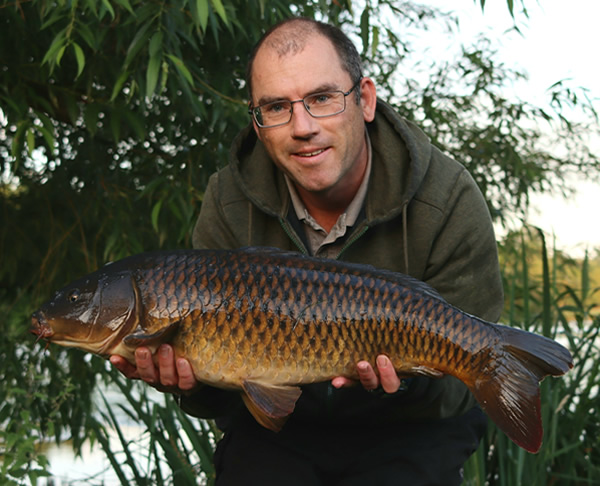
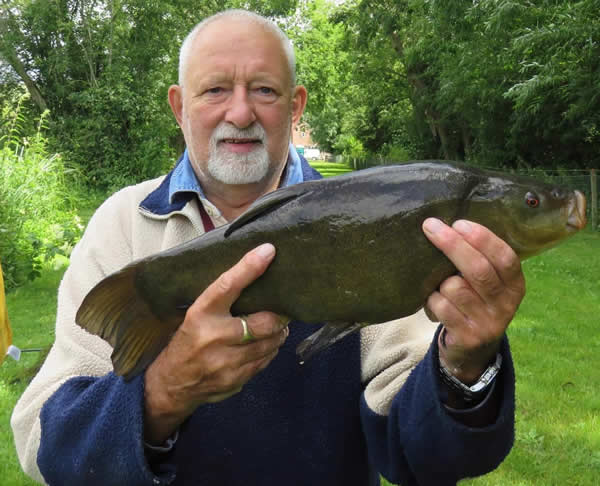
Steeple Langford has seen a great year for weed growth. This is good as it provides food and sanctuary for the fish on top of reducing the risk of Blue Green Algae blooms. It does however make the angling difficult and only one carp has been reported by any of the anglers brave enough to approach the venue. There is light at the end of the tunnel though and after more positive meetings with the landowner and works by the bailiff team over the closed season we are now able to start re-introducing stock into the lakes. it will be a slow process as we do not want to find ourselves going backwards, but a number of C3 carp from VS fisheries will be introduced into the Pleasure Lake this winter. They will be grown on in there until large enough to move across to Whitebird Lake and we will top up the Pleasure Lake until we get back to a sustainable stock level in both lakes. Watch this space. (https://salisburydistrictac.co.uk/coarse-lakes-stocking-plan/)
Please let us know what you are catching and where. As I have said above, it can be big or small but please let the club know. Whether a Facebook message, forum post or a tag on the Gram (#salisburyanddistrictanglingclub) we love to see that all the hard work is allowing you, our members, to enjoy the hobby we all love on the club’s waters.
That’s about it from me, thank you to all the volunteers and club staff that have been involved in all the projects that are going on as without you they would not happen.
Ben Bentley
Vice Chairman (Coarse)
Academy Programme – Kris Kent
We finally managed to launch the Academy Programme in July with three Late Season Chalk Stream Fly Fishing Courses at Durnford. The Courses were extremely well received. Here are a few quotes from the feedback received:
“It was great to learn more about the culture and operation of the Club, to hear of future plans and generally to feel part of a fishing people community. Specifically, the Course filled in a number of knowledge gaps for me both basic such as tippet approach plus fly selection and other rivercraft.” 5 out of 5.
“I have been fly fishing for 20 years, all self-taught, and I learnt a lot! Lots of discussion and student participation, which is always a good thing with adult learners. My biggest desire was to understand more about leader construction and management, and I found this part of the course was very useful and very well delivered. Handout and the follow-on email with hyperlinks were very helpful. Finally, the insights offered all the way through, based on evident knowledge and experience, were invaluable.” 5 out of 5
“Very informative and came away with some definite tips” 5 out of 5.
“Very professional and informative and casting demos were brilliant.” 4 out of 5.
“The entomology was really interesting I hadn’t appreciated how much aquatic life is down there. The handout with suggested flies for late season is really helpful.” 5 out of 5
“A really excellent day today. As a relative novice game fisher, I was hoping it would give me more confidence to get out on the club waters. It has definitely done that. I feel I know enough about fish and their food to actually catch one! It has also given me a platform from which to go and learn more.” 5 out of 5.
“I must commend Kris who put this course together. It was just what I needed to inspire me. I thought the course content was spot on. The delivery was excellent and clear answers to questions asked. The practical input by Kris at the Riverside was particularly important to me. Lee’s input on entomology was really useful and I was amazed at the quantity and variety of life within the river. As a result of what I’ve learned on this course I will be looking out for any further offerings.” 5 out of 5
Demand has been very strong for these courses, with over 80 members applying for the 18 places. We therefore plan to have a full programme of courses in place for 2022. More details to follow.
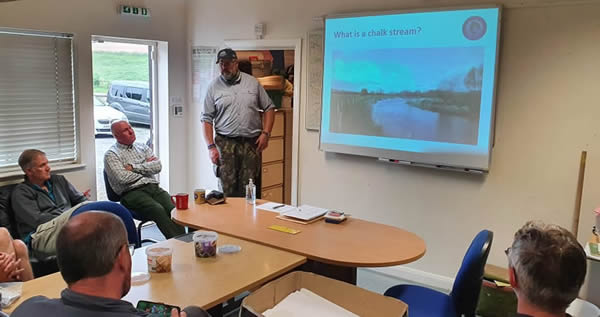
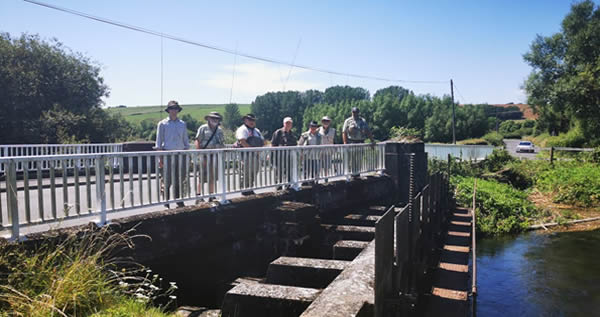
Charles Jardine Masterclasses
On Friday 30th and Saturday 31st July we held two Masterclasses at Hamer Lake with Charles Jardine. Just over 30 members attended the two half day sessions and once again the feedback has been very positive. Charles covered all aspects of fishing Hamer including tackle, rigs, flies and retrieves.

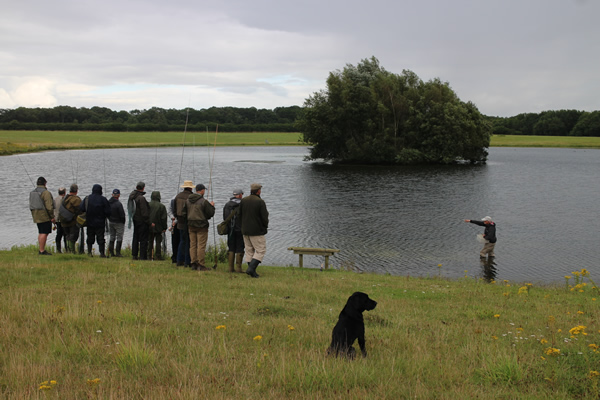
Water Quality Update
The club has been very active pursuing different avenues on the water quality front.
Submission to the Environmental Audit Committee’s call for evidence.
We submitted detailed evidence on water quality to the select parliamentary committee. There were common themes from most sources who submitted evidence, the main one being the inability of the Environment Agency to carry out its role effectively.
The Wiltshire Fisheries Association Water Quality group’s lobbying resulted in a local MP, Danny Kruger, getting himself on to the Select Committee reviewing the evidence and making recommendation for the drafting of the new environment Bill.
The evidence also supports the proposals within the Chalk-stream Charter by Charles Rangeley-Wilson with assistance from the Salmon and Trout Conservation. This is still progressing with a view to securing a timescale to the actions.
SADAC – Request for Action
The club formally pursued the original Request for Action with the Environment Agency, attempting to halt further water quality deterioration from increased phosphate levels on SADAC waters at Countess, Ratfyn and West Amesbury. The original RFA was initiated in 2018 and was left open as the EA’s evaluation at the time was that the situation would improve. However, this has not been the case. Phosphate levels have continued to rise over the last three years and minimum standards and invertebrate samples have fallen.
In addition, SADAC raised two Incident Reports with the EA in March and April following invertebrate samples not achieving the required minimum score below Queensberry Bridge.
The matter is still being investigated by the EA and SADAC have a meeting later this month regarding the EA’s response to the Continued Request for Action.
SADAC are continuing the monthly invertebrate sampling on all of the chosen locations.
“Smart Rivers” – Invertebrate Benchmarking Data
A new working relationship has been established with the Salmon and Trout Conservation.
Three separate hubs have been created for the Avon, Wylye and Nadder and new coordinators are in place for each river.
The intention going forward is to develop river specific improvements and action plans from trends detected within the Smart Rivers invertebrate benchmarking data.
The spring invertebrate samples were taken from all locations and are currently being analysed.
Building relationships and partnerships
We been actively engaging with various organisations and individuals to promote the water quality agenda in our catchment.
We are having direct conversations with a number of stakeholders, including the Environment Agency, Natural England, Wiltshire Council, Wessex Water, Wessex Rivers Trust, Wiltshire Wildlife Trust, local MPs and a number of academics.
It is a slow but steady progress and we want to thank all members who have supported us with letters to their local MPs and have signed petitions. One thing is certain. The water quality agenda has been elevated and there is frequent coverage by the national media creating necessary public awareness. We must therefore persevere and remain optimistic.
Andreas Topintzis: WFA Water Quality Chairman
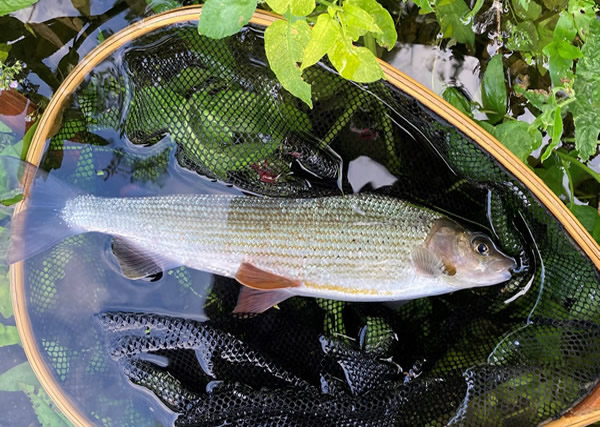
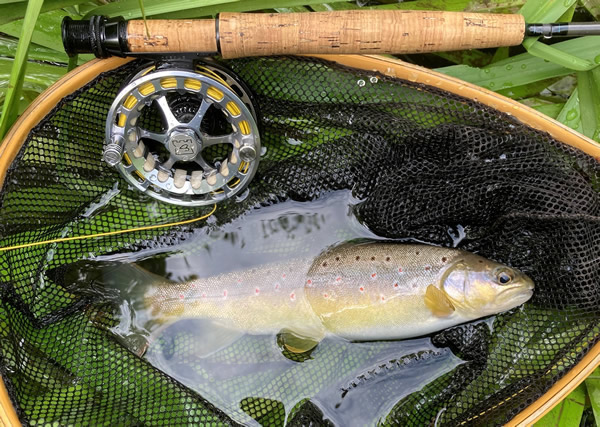
Small Fry Club
As you may know, SADAC’s inclusivity policy also extends to youngsters of all ages. In fact the Club hopes that by introducing kids to the sport we are not only nurturing the anglers of tomorrow, but also the future guardians of our rivers and the environment in general. To that effect we have an under 12 “Small Fry Club” (page 41 year book) and Junior membership (cost £5 and £34 respectively). In order to introduce local kids to the schemes we run sessions where youngsters are given the opportunity to fish for free under the tuition of a qualified coach.
This summer we managed 3 sessions at Witherington Farm and Petersfinger lakes. A total of 45 youngsters from Sarum Academy, Downton Scouts, current and ex Small Fry or total newcomers joined our coach and volunteers. They learned about fly life (thanks Andreas for the demonstration) and had fun catching lots of fish. The feedback from everyone was extremely positive and some newcomers joined the Small Fry Club.
The Club has plans to expand these sessions to a more structured and comprehensive setup, where kids are given the opportunity to cover all aspects of becoming a competent coarse angler over a number of sessions. If you feel there is also an appetite for something similar for fly fishing, please let us know.
None of this would be feasible without Club members donating their time. We would like to take this opportunity to thank Tony Hogg for being our Level 2 coach lead and John Slader, who continues to support these events with expert tuition and provision of kit. Also the keepers and members that gave up their time to mentor the kids and of course Jon Martin for donating several whips. If you are interested in helping at future events or have kit to donate to the Club, please get in touch.
Dr Perikles Karageorgopoulos
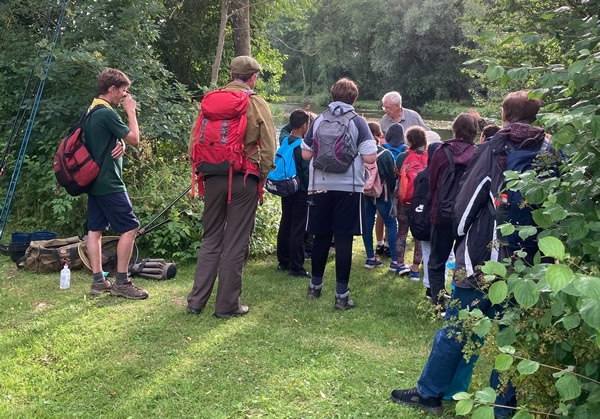
Invasive Species
Spot the Difference
It has been a very peculiar start to the 2021 season; April’s night time frosts stalled much of the plant growth that we would normally be maintaining up until the beginning of June. But believe me it has made up for it since then, with many plants putting on amazing growth in only a few days.
One of the plants that I always have my eye on is the invasive Himalayan Balsam, which we encounter mainly on our Ebble, Nadder and Wylye beats. Hopefully you guys that can identify this, some might say colourful bee friendly plant, don’t get to see it on our river banks as the keepering team take great care to remove this damaging plant from our stretches. It has taken a few years work to get on top of some problem areas where the Balsam was rife but with concerted effort we have managed to get on top of the plant on our banks and adjoining wet woodlands that we look after.
One problem we do face is when our maintenance team does not have time to deal with forests of the stuff we spot upstream and adjacent to our fisheries, so we called in for some help from the Wiltshire Wildlife Trust (WWT) water team. Nick Wilson from the WWT was very keen to lend us a hand with the problem areas I had identified to him in and around Warminster. I have never seen Balsam on the Eastliegh beat and believe somewhere between Eastliegh and Norton Bavant could be the source of its downstream migration on the Wylye.
So we assembled a twelve strong crew of club members and WWT volunteers at Norton Bavant to go balsam bashing on one of our neighbouring banks. Due to the stalled growth of the balsam this year the giveaway flowering heads had not formed, which was a bonus as their seed heads quickly form and exploded dispersing seeds when the plant is touched, giving us more chance to eradicate the plant from these areas. With the lack of tell tale flowers the gang had to firstly get to grips with identifying the Balsam from other greenery namely nettles in amongst the undergrowth, we all learnt quite quickly to spot the difference between the target species and the very similar looking stinging nettles in amongst the jungle of willows.
The day was most successful with the team pulling many hundreds of plants, reducing the work load for a follow up sweep through the areas in a couple of weeks time by the keepering team. We would like to thank all the volunteers for their help, with special thanks to Andrew and Trev for coming along representing our club. The WWT and our club have planned to organise another day on the same site next year, please keep an eye on the website and forum for work party dates, hope you can join us protecting our rivers next time.
Hope you all enjoy the rest of the season,
Paul Clancy
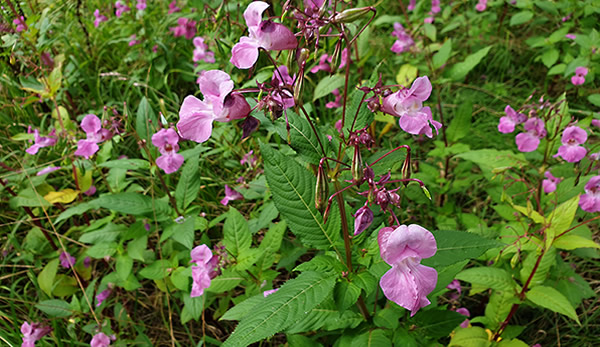
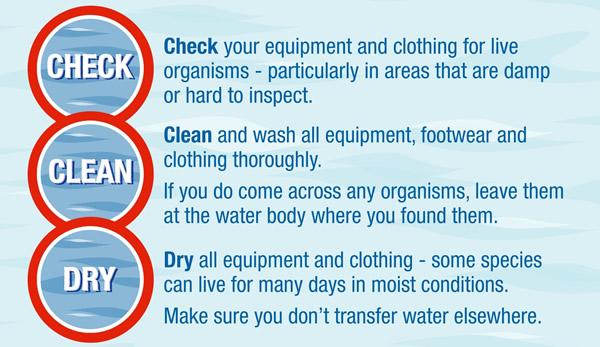
Bailiff News
Over the season so far there have been a number of cases of intrusion on our waters, mainly at Ham Hatches. As usual, children have been seen fishing there quite often but there also seems a higher number of adults too. The incident reporting system has been put to good use and, in some cases, anglers have also called 101. The police do seem to have been more responsive although it is often the case that the offenders have scarpered before they arrive. One excellent piece of work was where a PCSO followed up by visiting a repeatedly offending youth in his home and having a few words with him. The responses from these miscreants have varied, with all the usual excuses plus a few new ones (“I’m dyslexic, I can’t read that big, yellow sign”. “OK, is your mate dyslexic too, or can he read it for you?”) and, mostly, they have left the fishery when asked to. There has occasionally been mild confrontation but nothing more than a little verbal sparring. Other good news is that Wiltshire Police were the first in the country to empower their officers, including PCSOs, with the right to check Environment Agency licences. Previously, this could only be done by EA enforcement officers. Of course, the club bailiffs can check members’ licences as they have specific permission to do so, but cannot check non-members caught on our waters. This is a big step forwards. Also, the club is setting up a WhatsApp group for use by bailiffs and committee so we may be able to respond more quickly. This would enable Andreas, for example, to send out an alert should a member contact him to report some illegal fishing.
Andy Stafford

